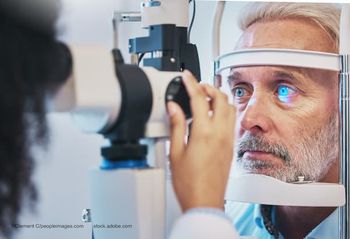
Optogenetic stimulation: Solving challenge of controlling IOP
Lipid regulation within primary cilia may prove to be a solution for patients
A class of lipids in the trabecular meshwork reacts to changes in light intensity and may provide a pathway to regulating IOP in humans.
Reviewed by Yang Sun, MD, PhD
Is there a unifying factor that controls the IOP? To answer this question,
The rarity of the disease shows how critical the enzyme deficient in this disease is critical for normal development.
The affected children are born with glaucoma and cataracts. The mutation of the gene causes a lipid phosphatase defect that is critical for normal development. Dr. Sun is an associate professor of ophthalmology at
Possible link
Interesting findings in the previous five years have suggested that lipid regulation within
High-power microscopy studies have revealed the presence of a specific class of
According to Dr. Sun, the identification of the exact regulatory mechanism of lipid regulators and their influence in modulating IOP could prove significant in future approaches to influence and control elevated IOP and therefore glaucoma in children.
Dr. Sun theorized that IOP could be potentially regulated using a light inducible mechanism which allows to regulate the enzymatic activity in a time-dependent fashion. He explained that this idea arose in the wake of pioneering studies by
Light stimulation of a specific wavelength on these neurons resulted in the emission of a controlled electrical signal. This response could be used to control a desired activity by turning the electrical signal on and off.
RELATED:
“This is a really remarkable way of controlling function in an animal,” Dr. Sun commented.
This discovery prompted him to investigate the possibility to influence IOP in the same manner. The idea led to the creation of a light-sensitive construct that is based on the same gene which is mutated in Lowe syndrome and causes dysfunctional enzymatic activity. The goal was to target the enzymatic activity in a light-dependent manner to primary cilia, which are known for their role in pressure and flow sensation.
Research with a virus
Dr. Sun demonstrated that when the light was turned on, the targeted enzymatic activity resulted in a profound change in the cytoskeleton organization of the
The virus was designed to infect the trabecular meshwork cells, allowing the IOP-changing mechanism to unfold in this area which is so important in regulating outflow facility, Dr. Sun explained, noting that using this model, light dependent enzymatic activity resulted in a decrease in IOP while turning off the light reversed this IOP effect.
“These results showed that the regulation of
Over the last decade, a mouse model of Lowe syndrome was created, marking the first time the disease was studied in animal models. These animals are characterized by loss of the ganglion cells and defects in the outflow facility.
"When light dependent enzymatic activity activated in this model, it resulted in significant improvement of the outflow facility,” Dr. Sun said.
A similar effect was also observed in a steroid-induced glaucoma model developed in collaboration with investigators at Duke University, showing a reverse of elevated IOP after light-dependent enzymatic activation.
“We identified a particular class of lipids within the trabecular meshwork cells, which play a crucial role in regulating mechanisms related to IOP,” Dr. Sun added. “The role of primary cilia in this setting is of equally importance, due to their association with pressure changes sensation and as hubs for many of these lipid-signaling mechanisms”.
RELATED:
The identification of a reusable and reversible way to control high pressure in mice, using light to specifically target the enzymatic activity to subcellular regions, is a new approach for the characterization of the mechanisms involved in
This study highlighted the activity of this enzyme as a potential very promising target for future pharmaceutical applications.
“The current investigations are part of a larger preclinical animal model, which will be used to test this idea,” Dr. Sun concluded. This study received funding from the Veteran’s Administration and the National Eye Institute.
RELATED:
Disclosures:
Yang Sun, MD, PhD
E: [email protected]
Dr. Sun has no financial connections to disclose
Newsletter
Don’t miss out—get Ophthalmology Times updates on the latest clinical advancements and expert interviews, straight to your inbox.



















































.png)


